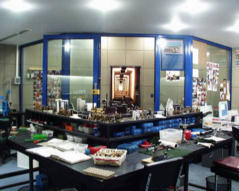

 The Accurate Reloading Forums
The Accurate Reloading Forums  THE ACCURATE RELOADING.COM FORUMS
THE ACCURATE RELOADING.COM FORUMS  Guns, Politics, Gunsmithing & Reloading
Guns, Politics, Gunsmithing & Reloading  Reloading
Reloading  Pierced Primers????
Pierced Primers????Go  | New  | Find  | Notify  | Tools  | Reply  |  |
| one of us |
I would suspect that either your firing pin is too long or that your primers are not seated properly. | |||
|
| one of us |
I think the cup on the 6 1/2s may be a little lighter than that on the 7 1/2s which is what I would normally use. The problem with piercing primers is that the problem tends to get worse. This happens for a number of reasons the most common being gas cutting of the firng pin tip. Another thing that can happen is that the escaping gas will drive the striker to the rear with enough force to actually damage the spring. The now weakened spring supports the cup less and allows piercing. The potential also exists for gas cutting of the bolt face or the firing pin hole. Be sure and check that no pierced primer pieces (say that fast ten times!) are in the bolt. The last thing you need is to suffer a misfire when you're lined up on a charging chuck! Regards, Bill. | |||
|
| <auto> |
I had the same thing happen to me when I was reloading my .22 K hornet. When I got back home, I checked and found I had accidently used winchester small "pistol" primers instead of winchester small "rifle" primers. It didn't really seem to hurt anything, except the primer had a hole in it. It did cause a small amount of smoke. I fireformed about 150 shell that day, and all had pierced primers. The rifle primers don't get holes. I am using a Martini action. The gun shoots well, especially with the correct loads. I would not make a habit of using the wrong primers. Your firing pin may have an extra strong spring?? | ||
|
| <Youper> |
I have a Lee Enfield that used to have that problem. It worked fine with military ammo, but with commercial or handloads about 10% of the primers pierced. I had a gunsmith check it out, and he found the pin protrusion to be within accecptable limits, but on the long end. I had him shorten it a bit, and now it works well with both. | ||
|
| <.> |
At the risk of preaching . . . In medicine we're taught to read the label THREE TIMES. Once when taking it off the shelf. Once when dispensing. And one last time when replacing it back on the shelf. I read and re-read the labels on reloading components several times. I separate different primers into individual storage boxes. I read powder type when I pick up the canister, when I fill the dispenser, and then once more when I replace the lid on the canister. Then, I set the canister on the bench in front of the operation so I can read the label a few more times. You're working with "explosives" -- Things that go "bang" will explode in your face without warning if you've mis-read labels or otherwise failed to load to spec. I confess to having placed the poise on the scale 5 grains past where it should have been. Instead of loading 9.5 grs., I was loading 14.5 grs. The web in the case (45 ACP) came apart on me. Ruined a magazine, split the grips, and showered me with burning powder. I got lucky!!! | ||
|
| Powered by Social Strata |
| Please Wait. Your request is being processed... |
|

Visit our on-line store for AR Memorabilia

